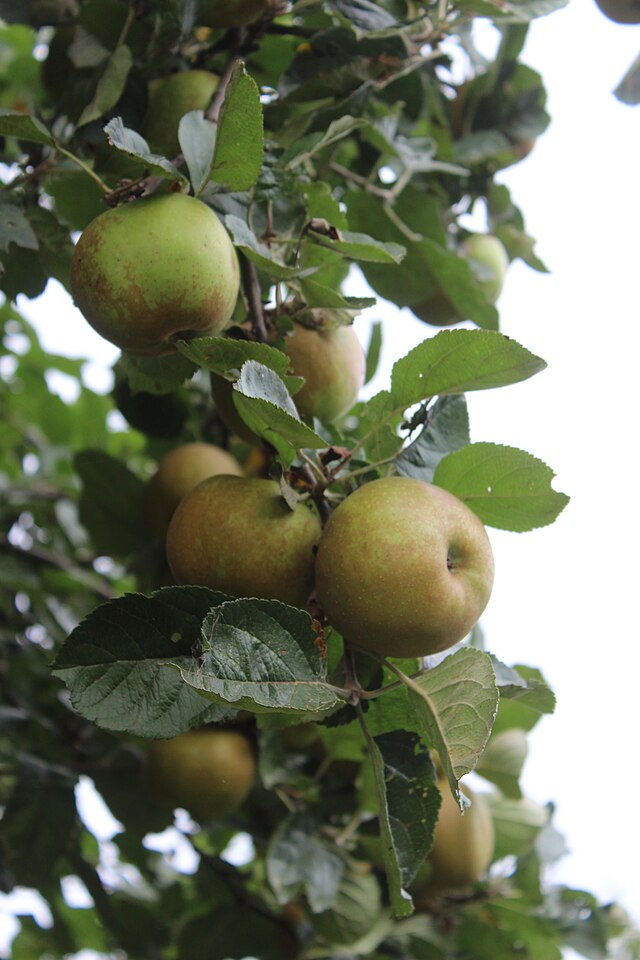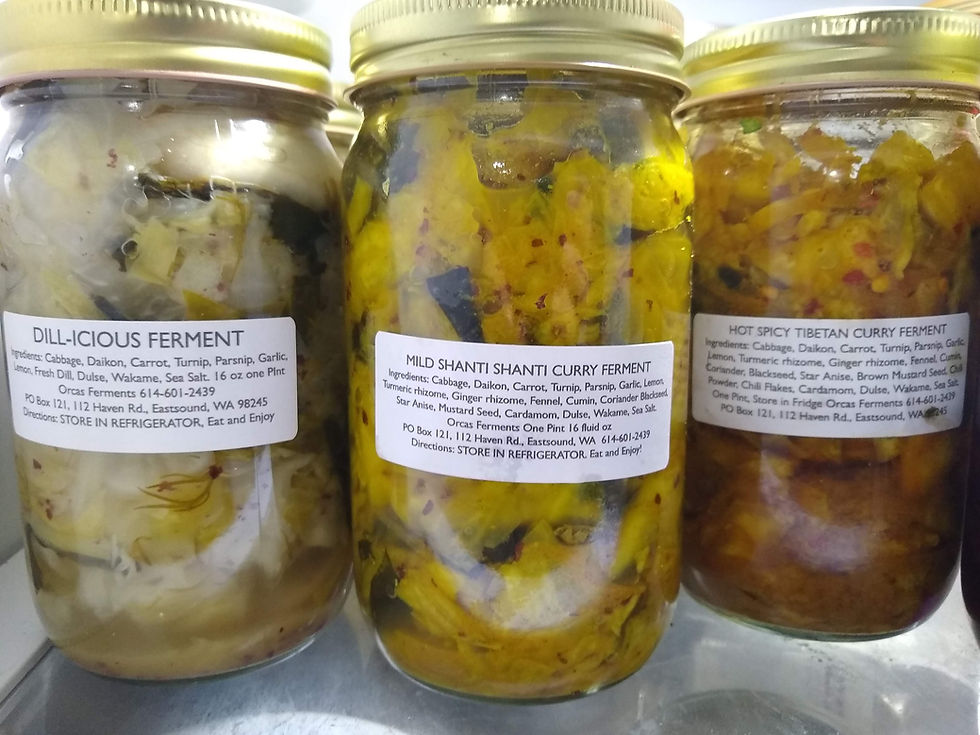Defiance, Part I: The Last Apple Standing
- Wolfy
- 12 hours ago
- 4 min read
I walk a lot on this island, and this is my favorite time of year to do it. Why? Because walking now is an act of defiance—against the rain that slants sideways, the winds that rake the trees raw, the early darkness that drops like a trapdoor. The ferries run half-empty. The tourists are long gone. Orcas goes quiet, leaving only its bones showing.
It’s mostly just me out there now—and Belle de Boskoop, a quiet partisan in a landscape that’s surrendered. The old Dutch brute clinging to its branch like it has something left to prove. Everything else has accepted the season’s rule, but Boskoop holds on, weather-bitten and stubborn, a little like anyone still walking the roads and backroads in late November.
I love this apple for its defiance. It’s the ultimate winter keeper apple. It is also one of the most balanced apples I’ve had—sweet, acidic, and without the penalty that plagues so many late hangers. The skin isn’t that tough, battlefield-leather armor you get with other winter apples. It’s firm, yes, but fair. The history, its endurance, though, makes it worth having.
Belle de Boskoop came out of the Dutch peatlands in 1856, a place where trees survived by grit. Boskoop was a nursery town long before that word meant anything commercial. Families there raised trees the way other towns raised children—generation after generation, each one a little tougher than the last. The soil was cold, wet, and sullen — as if it already sensed the century was about to turn violent. Fruit that thrived in Boskoop didn’t just grow; it endured.

The apple itself wasn’t bred so much as discovered—an unnamed seedling, an orphan, found on a hillside and recognized, even then, as something delicious and with a real spine. It spread through Europe the way good stories do: quietly at first, carried by orchardists, not merchants. By the turn of the century, the Victorians had adopted it and praised its “keeping quality,” which is just old-world shorthand for this fruit doesn’t back down from a fight with ice-cold tyrants. Farmers in Germany, Scandinavia, and the British Isles planted it for the same reason sailors wore wool: it performs in weather that hates you.
And here, in the Pacific Northwest, far from the Dutch peat beds that shaped it, Belle de Boskoop feels strangely at home. It likes our rain, our fog, our maritime indifference. It likes slow autumns and long, wet Novembers. It hangs very late, into December, as if measuring the resolve of anyone still out walking the roads after the tourists have fled.
It’s an immigrant with the memory of a harder homeland, and it carries that history in its flesh.
Orcas Island has a long memory for apples. Before the ferries, before the galleries and tasting rooms, there were trees—miles of them—planted by homesteaders who understood winter better than modern people ever will. In the 1880s and ’90s, this island shipped tens of thousands of boxes of apples a year. Steamers left the Eastsound dock stacked with fruit bound for Seattle, Tacoma, and Victoria. The orchards were the economy, the insurance policy, the anchor.
You can still read that history in the land if you know how to listen. Old barns with ventilation slats meant for fruit storage. Once in a Blue Moon Farm, its King apples nearing 150 years old—gnarled, resolute, older than most stories left dying on this island. Crow Valley’s moss-softened packing houses. Fields where grid-rows once ran straight until the forest took them back. These trees were the first settlers that didn’t try to leave.
The varieties were the workhorses of the age: Baldwin, King of Tompkins County, Rhode Island Greening, Spitzenberg, Yellow Transparent, a summer dilettante, Blue Pearmain, Wealthy. Immigrants, all of them. East Coast stock, Midwestern stock, Dutch and English cultivars ferried across the continent in pockets, saddlebags, and nursery shipments. They were chosen not for beauty but for defiant behavior: they stored, they traveled, they didn’t bruise easily in the hold of a steamer. They carried the winter.
Most of our orchards collapsed when the century turned. Railroads brought in cheaper fruit from the Yakima Valley and Wenatchee. Islanders tore out rows, let fields go feral, or simply walked away. The old commercial blocks became meadows, goat pasture, or quiet woods. But apples are stubborn. So are islanders. They naturalize. They seed. They reinvent themselves. So the island is still full of survivors—anonymous late-hangers over ditches, half-rotted trees in thickets, giants blooming oceanside or behind barns nobody’s rolled in for fifty years.
The last apple standing isn’t just a curiosity on a wet November walk. It’s the island reminding me what survives here and why. Everything soft gives up early. Everything ornamental folds at the first real storm. What lasts—what truly lasts—is built on stubbornness, on weather-beaten wisdom, on the quiet conviction to hold your ground when the year turns against you.
That Belle de Boskoop, hanging alone in the dark wind, is the proof. An apple that refuses to fall simply because the season says it should. An apple that stays until it decides otherwise.
Defiance lives here still, in trees older than our state, in roots that remember harder winters than ours, in fruit that waits out the storm. And this—this late November walk with the last apple clinging to its branch—is only the first lesson.
The island has two more I will tell. Join in to hear them.




Comments